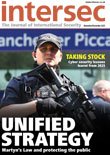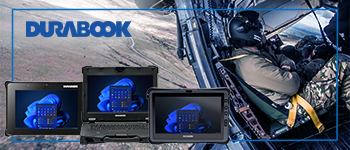Beneath the skin
Why are more airports not using X-ray technology to detect internally concealed contraband and other threats such as explosives, asks Tony Kingham
I would argue that there is a compelling case for X-ray detection equipment to be deployed in the departure lounge of every international airport. In recent years, we have seen the highly publicised introduction of many new technologies in security screening queues at airports and elsewhere. Some are now taken for granted, such as metal detectors and trace detectors. Others have proved more controversial, such as millimetre wave body scanners, which have created a good deal of concern among the travelling public and the privacy lobby – so much so that some authorities have already been forced to make changes to the way the machines are operated and how scanned images are presented to the operator. Officers can now view the images remotely, without seeing the person being scanned, using software imaging technology to mask specific body parts.
In the US, the Transportation Security Administration (TSA) has taken steps to ensure that no scanned images will be saved. But this measure assumes that the public trust the authorities and/or the individual officers operating the equipment to abide by the rules, and at least one recent scandal in the US has left the general public in some doubt.
Manufacturers have also responded to the concerns raised. Smiths Detection has introduced the “eqo” screener, which has an automated detection capability that dispenses with the need for operators to review images at all. The system’s software detects concealed objects and indicates their location on a generic graphic display. Other companies have introduced passive millimetre wave devices, which have the advantage of being non-radiating and only show the location on the body of an object, rather than the body in detail. Once the privacy issue has been fully addressed, as it undoubtedly will be, deployment of these machines should and will be the norm.
But one thing that none of these scanner systems can do is detect materials hidden inside body cavities, and this form of terrorist attack remains a very real and present danger. Every week at airports around the world, drug smugglers (mules) are caught carrying kilos of swallowed illegal drugs inside their stomachs. They have been known to carry more than two kilos in up to 150 capsules (usually condoms). And of course, for every mule that gets caught, many more succeed.
A wide variety of objects are routinely smuggled into prisons inside the rectum of a prisoner or visitor. These are typically high-value prison contraband items such as mobile phones, drugs and cigarettes. But according to a report from MSNBC, a working 10-inch .38 calibre revolver was smuggled into a jail cell by a criminal suspect last year. The suspect had been strip-searched and made to perform what officers called a “squat and cough” procedure. His crime was discovered only when officers were alerted by other inmates.
This may be an extreme case, and it’s true that a standard pistol is almost certainly going to be picked up by metal detectors, but it illustrates what a highly motivated individual with a high pain threshold can do; and yet we still have no effective method of tackling this kind of issue in our airports. One worrying example of what could happen was provided when, in August 2009, an assassination attempt was made on Prince Mohammed bin Nayef, the Saudi interior minister. In this case, a terrorist was able to pass through two airport security screenings and Bin Nayef’s own security before detonating a device made from a mobile phone card and half a kilo of explosives that had been inserted in his rectum. Fortunately, Bin Nayef was unhurt. But the perpetrator, a Saudi citizen named Abdullah al-Asiri, was blown in two and experts agree that the blast was more than strong enough to bring down a pressurised aircraft travelling at 35,000 ft.
The attempted assassination of Afghanistan’s spy chief Asadullah Khalid back in December of last year is a similar example. Because of the recent assassination of an Afghan peace envoy by a terrorist with a bomb hidden in his turban, this individual was asked to strip in an armoured room and observed on CCTV. The bomb was not picked up using this method, so the unnamed assailant was allowed to see Khalid and was able to detonate the bomb in his presence. Once again, the attempt failed, resulting only in the death of the terrorist and non-life threatening injuries to Khalid. But in an aircraft, things would have been very different.
The reality is that this method will be used to get a bomb on board an aircraft some time in the not too distant future, and we really need to be doing something now to counter the threat. So what technology can we use to detect explosives carried internally? One method that has been tried is Explosive Trace Portals (ETPs), commonly known as puffer machines. These use a mass spectrometer to detect trace compounds in air circulated around a person in a booth. Some of these machines were deployed by the TSA but were later withdrawn because of reliability issues. In any case, it is not clear whether these machines would detect explosives carried internally.
Trace detection technology such as Ion Mobility Spectrometry (IMS) is a commonly used at method at airports for detecting explosives. This method involves a swab being taken of the passenger’s belongings or boarding pass to detect either vapours or particles, which are then analysed by a machine. This method is quick, but it relies on the carrier having handled the explosives at some stage during preparation for the operation. Given the fact that this technology is well known – and the intended location of the device! – they might well rely on a close friend or colleague to help them with their preparations.
Currently, the only reliable technology to identify objects carried internally is the full body X-ray scanner. These machines are already widely in use at airports around the world for detecting drugs and contraband smugglers, but almost exclusively in arrivals – after the passenger has completed their flight. In this scenario, the passenger suspected of possible drug smuggling is offered the choice of an X-ray scan or a full strip search. Most, for obvious reasons, opt for the scan. The scan is quick and safe and will identify any foreign objects, either hidden in body cavities or ingested.
As far as I’m aware, there are only two countries in the world – Nigeria and Ghana – where X-ray machines have been deployed in departures, in both cases Soter RS machines made by OD Security in the Netherlands. But in the US, these machines are used solely to target drugs mules on their outbound journeys, not terrorists.
It must be said that these machines only help once a suspect has been identified by security staff, and that having the right staff, with the right training and the right procedures, remains of the utmost importance. No one is saying that these machines should be made compulsory; nor should they be used for a mass screening process. Instead, they should be considered as a tool to be used selectively by properly trained security staff as a part of profiling and risk analysis. Is it not time the security staff at our airports had all the right tools to enable them to do the job we want them to do – namely, to keep us safe while we go about our daily business?
Case Study:
Man’s best friend
X-ray scanners will detect a bomb inside a passenger; of that there is no doubt. But other methods of detection must also be considered. Ideally, we need to identify would-be bombers before we get to the point of scanning. Technology, intelligence, profiling and soft interrogation techniques are part of the equation, but what about dogs?
Where the technology is not yet up to the job, we already know that man’s best friend is. While I have been unable to find any specific research to confirm that dogs can detect internally carried or inserted explosives, we do know that a dog is the best trace explosive detector we have available that does not require direct contact. We also know that dogs can be trained to detect cancer cells deep inside the body. So why not explosives?
Passive detection dogs are trained to indicate a find without touching, barking or jumping up. Anyone who regularly travels by plane will have seen these kinds of dogs occasionally, but probably not regularly, and probably not being used where they could be most effective: in the check-in or security screening queue and, just as importantly, in the transit lounge.
In the US, where dogs have been widely deployed at high-risk airports, Transport Security Administration (TSA) dog teams have attracted some criticism for missing training targets and not performing well, but this is not surprising given the number of dogs deployed in a short time frame.
Collin Singer is managing director of Wagtail, a company that supplies trained dogs for the British and US armed forces. He says: “Good dogs and handlers take time to train, especially for a busy environment like an airport lounge, and refresher training must also be carried out on regular basis. But properly trained dogs are more than up to the job.” The independent US report into the TSA’s “threat detection dogs” supports the view that training deficiencies are to blame for previous shortcomings.
Another efficient use of dogs would be to channel passengers through a choke point and use passive detection dogs behind a mesh screen or fence. Fans would be used to blow the air past passengers towards the dogs. It is believed that this method has been tested successfully in Singapore, but whether it has been deployed is not known.
Until a reliable technology is developed to detect explosives on and in the body, a combination of methods in a layered approach gives us the best opportunity to make flying safe. Ultimately, unless these tools are used at the flight’s point of origin, all our security efforts may be for naught.
Tony Kingham is a journalist, publisher and PR consultant who has specialised in the defence and security markets for more than 25 years. He is communications director for Borderpol and publisher of www.worldsecurity-index.com









